10 Important Tips for Visiting Kathmandu, Nepal
If you’re heading to Nepal, this post provides some very useful information for your arrival in Kathmandu, the nation’s capital.
For my recent trip to Nepal, despite reading up and preparing beforehand as I usually do, I didn’t find any guidebooks or online sources that mentioned these super-useful facts for staying healthy, cutting costs and keeping connected online in Kathmandu.
I wish I had known these things so that I’d been better prepared and potentially have avoided respiratory distress, stomach aliments and a temporary inability to do my work online.
Hopefully, this post will help out other travelers heading to Kathmandu to avoid the pitfalls I encountered there as well as some other useful information.
Here’s what you should know if you’re heading to Nepal:
Kathmandu is full of dry, dusty, polluted air
Nepal’s climate is quite dry, certainly much drier than SE Asia. In addition, Kathmandu & the surrounding Kathmandu Valley are usually very dusty (unless muddy in rainy season) and apparently quite polluted as well.
If your respiratory system is sensitive to dry air, dust or pollution, then you might need a few days or a week to adjust to the less-than-ideal air when you arrive in Kathmandu. During that time you might find yourself unexpectedly sprouting allergy symptoms such as a runny nose, stuffed up sinuses, mild headaches, dry mouth & lips and/or exhaustion.
When your respiratory system is under strain, it taxes your entire body, especially your energy & power.
In my case, I first thought I had a cold. Then I concluded I was allergic to the air. Eventually I realized the dusty, polluted air was attacking my respiratory system. One day after cycling two hours around the city, I wound up feeling sick the entire day, all the way until I went to bed. I didn’t feel better until the following morning.
Come to think of it, I’d had the same problem when I visited Kathmandu 12 years ago. Then I thought I’d just contracted my usual bronchitis. But now I finally know it was the city’s super bad air, not me per se.
After I mentioned my own respiratory distress to other travelers I met and online, I suddenly found many other people who knew exactly what I was talking about and had suffered similar problems in Kathmandu.
Now you’re forewarned about Kathmandu’s bad air before you arrive, so you will know what’s up when you suddenly sprout the symptoms. To protect yourself, you might want to buy & use a face mask or take allergy tablets. Even so, you might end up feeling really exhausted and have to take it easy for a few days before you recover or start any serious walking, cycling and exploring.
Oddly, I’ve never read any warnings about Kathmandu’s poor air quality in any guidebooks or from any other travelers. So I’m happy to start spreading the news.
Daily Power cuts
Kathmandu has power cuts every day. They happen randomly, at different times of the day, and for different lengths of time. They usually occur in the afternoon and early evening and last anywhere from 30 minutes to 7 hours! Luckily, electricity always seems to be on (one way or other) after dark, so functioning normally at night is not much of an issue.
However, the power cuts do cause two important issues that you should be aware of.
One. When the power is cut, off go refrigerators. And that means foods that must stay cold such as meat and dairy products cannot be kept cold consistently. Guest houses, tourist restaurants and hotels all have back-up power and staff understand the importance of keeping meat & dairy constantly cold. So eating at such places should be no problem.
However, small local shops & restaurants probably don’t have back up power. They probably don’t understand the importance of keeping meat & dairy products cold either. So it’s wise to avoid eating meat at local shops. Other foods such as vegetable dishes, rice, breads and so on should be fine.
Two. Internet access. Plenty of internet shops are scattered all around Kathmandu. In addition, most guest houses, hotels, tourist restaurants, cafes and bars offer wifi. But when the power is cut off, so is the wifi. Upscale hotels and larger tourist restaurants with powerful back up generators might still have wifi access. However, smaller guest houses probably don’t have back up power strong enough to keep wifi running.
That brings me to two other important tips about visiting Kathmandu:
Eat meat & fresh drinks at hotels, guest houses or tourist restaurants, not local shops
Silly me, within just two days of arriving in Kathmandu I already got myself sick from something I ate or drank at a local restaurant. Luckily, it only knocked me out for about 24 hours with diarrhea and tiredness. But it gave me a very quick reminder to be careful about eating in local shops. (like when I head to India next week)
Although the food & drinks at small local restaurants are very tasty, authentic and super cheap, there are two health issues about eating/drinking in those places. One is the daily power cuts I mentioned above. In addition, many of the local restaurants aren’t very clean, so their sanitation is questionable.
Once I realized the implications of the power cut issue, I stopped eating meat at local shops. I also stopped ordering drinks. Although hot tea & coffee should theoretically be safe because the water is boiled, the shops do use tap water and who knows how thoroughly it’s boiled? What’s more, most tea is often served with milk and I seriously question its sanitation and storage.
After I stopped eating meat & drinks at local shops, I had no more stomach issues.
I still recommend eating at local shops, but stick to vegetable dishes, breads (naan, chapatis, etc) and bottled & canned drinks.
If you want to eat any meat dishes, go to a tourist restaurant or hotel where they’re bound to understand the necessity of keeping meat refrigerated and, equally important, have adequate back up power for the daily electrical cuts.
Internet Access
Although wifi access and internet shops are found all over Kathmandu, the city’s daily power cuts quickly bring internet access to a halt. Since the power cuts occur at random times and for different lengths of time, you really can’t count on having internet access at specific or consistent times of the day.
If you work online or have other crucial reasons to access the internet reliably, it might well be worthwhile to use a usb modem with your laptop. In Nepal, I’ve found that NCell usb modem internet access is generally much faster than many wifi ports and it is completely independent of the frequent power cuts.
So if you find yourself in Kathmandu with a three hour power cut right when you need to work online, no problem! Just plug in your usb and access the web. You can keep going as long as your computer battery holds out. Then you’ll have to wait to recharge your computer.
To get hooked up with Ncell usb internet, visit the main NCell Office on Durbar Marg Road, about two blocks south of the Imperial palace grounds and just east of Thamel.
If you already have an international usb modem (especially with Huawei software) it should work with NCell’s sim and internet system. (NCell’s usb modem is also a Huawei stick) If not, you’ll need to buy an NCell modem, which costs 3500 rp / $35 US.
But the sim card costs a mere 100 rp / $1 US!
Monthly pre-paid internet packages are priced by how much MB or GB data you need to use. Some sample rates are 500 MB for 450 rp, 1 GB for 700 rp or 5 GB o 2300 rp. You can also buy much less or more than these amounts. A reasonable monthly amount if you’re online several hours per day is 1 GB for 700 rp / $7 US.
If you already have your own international usb modem, it’s really very inexpensive to use this system in Nepal. Most importantly, it’s faster than wifi and is independent of daily power cuts.
Nepal is safe – don’t worry about theft or personal safety
Quite happily, theft doesn’t seem to be part of Nepali culture. You really don’t have to keep an eagle eye on your bags, wallets or possessions. Not when you’re walking down the streets or browsing in shops or eating at a restaurant or hanging out in your guest house.
You also don’t have to worry about your things in your room, assuming you’ve locked the door and windows, of course. You probably wouldn’t even need to lock your door when you’re sleeping at night, truth be told.
Avoid staying in Thamel – tourist ghetto with masses of touts
Thamel is the Khao San Road of Nepal. It consists of several roads jam-packed with nothing but souvenir shops, outdoor gear, tourist restaurants & cafes, book stores, guest houses & hotels. Lots of persistent, wandering touts try to persuade every passing tourist to buy something – a tour, a bag, hashish, a hotel room. In short, Thamel is a noisy, chaotic tourist ghetto.
If you prefer a quieter, more authentic Nepali experience and want to avoid heaps of touts, then simply don’t say in Thamel. There are several other nearby areas in the city center which have more low-key guest houses & hotels.
Paknajol district lies just a 5-minute walk NW of Thamel on a little nob of a hill. About one dozen guest houses with gardens and rooftop balconies are clustered around the hill, most run by families and a few young staff.
Just south of Durbar Square is the Freak Street area, the main hang out spot for hippies back in the 1960-70s. Now the area has lost it’s fame and glory, but a few guest houses still remain. It’s very low-key.
Several guest houses & hotels are located near famous Boudhnath Tibetan Stupa, just NE of the main city. It’s a great area, though you’d need transportation to get into town and to see any other sites.
Getting Around
Although Kathmandu is a fairly large, sprawling city, most of the main sights and attractions are all within the city center, within walking distance of each other and from Thamel, the main ‘tourist ghetto’ district.
From Thamel you can reach Durbar Square within 10 minutes or Swayambunath hill top temple in about 30 minutes. All the narrow streets between Thamel & Durbar are full of interesting shops, temples & Nepali daily life.
Several main attractions, though, are not really within easy walking distance. They include Patan, Boudhanath Tibetan Stupa and Pashupatinath Temple. To reach those sites, you’ll need some sort of transportation. But…
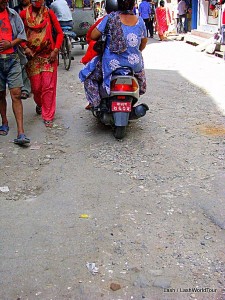
typical Kathmandu bad road in the central city – notice pedestrians, bicycle, motorcycle and rickshaw all vying for space
Terrible road conditions
Amazingly, only a small percentage of Kathmandu’s streets are even paved! Most are simply compacted dirt or extremely old stone tiling. All the roads, whether paved, dirt or stone are chock full of potholes, loose stones and dirt piles.
No sidewalks exist along most roads, so the streets are full of pedestrians as well as motorbikes, bicycles, cars, buses, dogs, rickshaws and various deliver vehicles & carts. It’s chaos.
I bring this up simply so you won’t be utterly shocked when you arrive.
Considering Kathmandu is the capital city of Nepal and a major tourist destination, the horrendous road conditions are a really appalling statement about the Nepalese government.
Just sayin.
Renting a bicycle
If you’re confident cycling on Kathmandu’s poor roads and hectic traffic (it’s very slow moving) then renting a bicycle is the way to go. All the bike rental shops have mountain bikes with wide knobby tires.
Rates in central Thamel are outrageously expensive: $15 US per day. That’s insane for Asia! In comparison, I can generally rent a bike in Malaysia for $3 per day, in Bali for $1-2 per day.
Luckily, there are much cheaper alternatives in Kathmandu. Simply head 1-2 streets west of Thamel to Paknajol Road, which runs north-south parallel to the main Thamel roads.
On Paknajol Street you’ll find several shops renting bikes for 300-500 rp per day ($3-5 US) they usually have different grades of bikes for different rates, but all are mountain bikes with wide knobby tires. The shop owners are willing to negotiate on the rates, too, especially if you’re going to rent for a few days or a week.
Avoiding entry fees at main temples & attractions
Kathmandu’s main attractions: Durbar Square, Patan, Boudhnath Temple, Swyambunath Temple and Baktipur Town all charge entry fees to foreigners. The typical rate is 750 rp / $7.50 US. Baktipur currently costs 1100 rp or $15US.
Depending on your budget that may or may not seem like a hefty fee. Regardless, if you visit several of these sites, the fees quickly add up. Three destinations will already tally over $20.
Swyambunath Temple fee is a much more reasonable 200 rp / $2 US. The ticket booths are at the top of the stairs at each entry to the hilltop temple. You probably can’t beat this entry, but it’s not so expensive.
Durbar Square
On the main north entrance, there’s a strict ticket gate. But at the 2-3 south gates and the eastern gate, the guards don’t seem to pay much attention to people entering. I cycled into the plaza on several different days and was never even stopped about a ticket. At one south entrance gate there’s a low pole barrier across the road. I had to dismount my bike and carry it over the pole. Even there I wasn’t asked about at ticket.
Boudanath
The main entrance has a big wood gateway you must walk through. The ticket office is right inside. However, just 50 M to the east there are two smaller alleys lined by shops, leading into the temple plaza. Just walk in those alleys instead.
Also on the north side, several alleys lead into the plaza. They may or may not be watched carefully by ticket officials.
Once you’re inside the plaza, you might want to avoid directly meeting up with a ticket vendor. But then again, don’t ask suspicious by suddenly changing directions when you see one of them. Just act as if you belong there.
Baktipur Town
Apparently this is one place where guards watch all entryways meticulously. It might not be possible to beat this fee. In addition, guards also wander around the town and randomly ask to see tickets, which they actually examine carefully for dates and passport numbers! I was asked to show my ticket 3 or 4 times while I was there less than 24 hours.
QUESTIONS:
If you’ve visited Kathmandu, did you run into any of these issues?
Do you have any other useful tips to add?
———————————————————————————————————————————-
You might also enjoy:
My First Impressions of Kathmandu
Photo Gallery: Kathmandu
————————————————————————————————————————————–







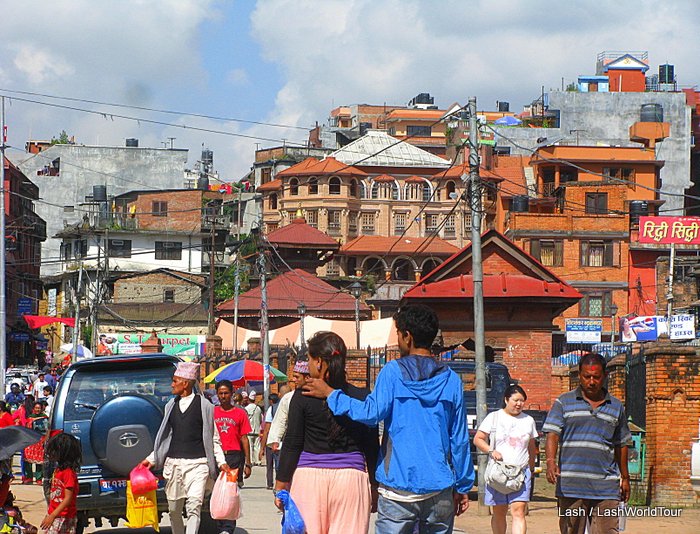
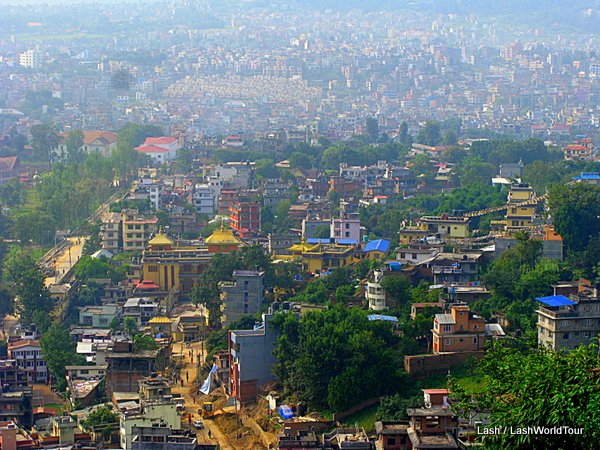
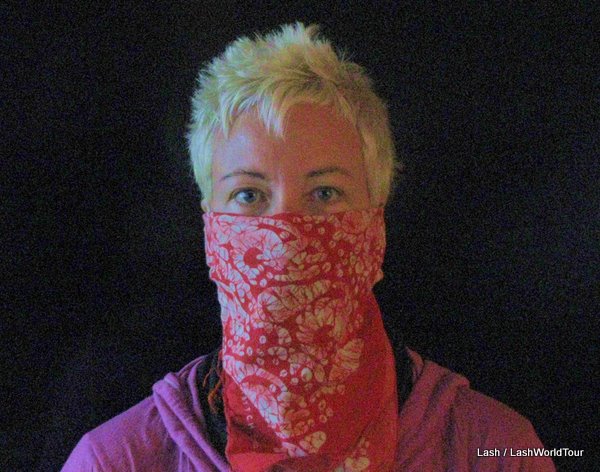
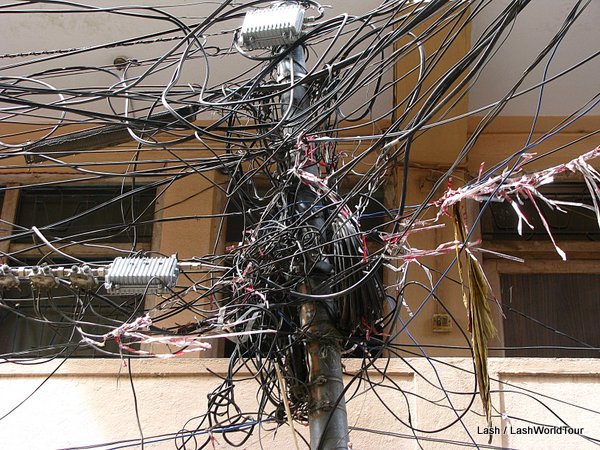
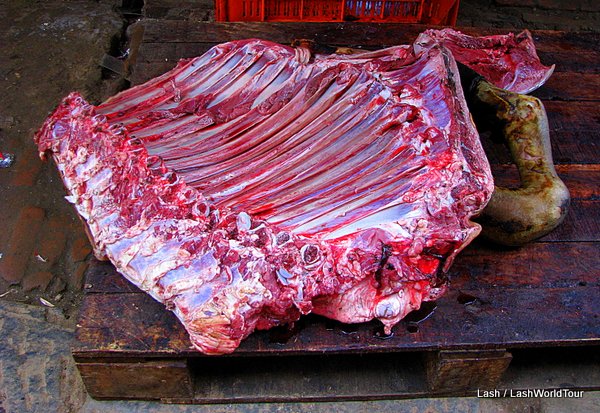
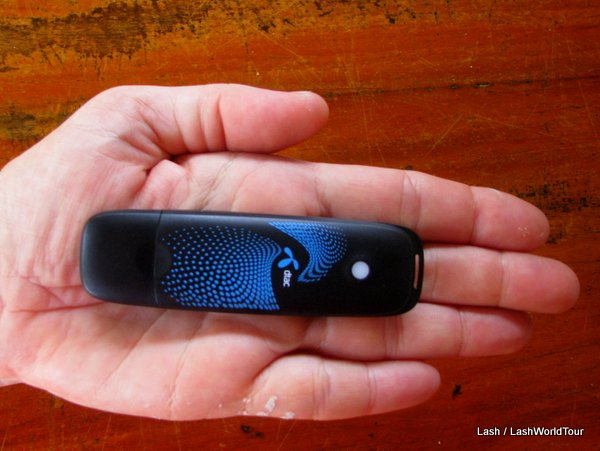
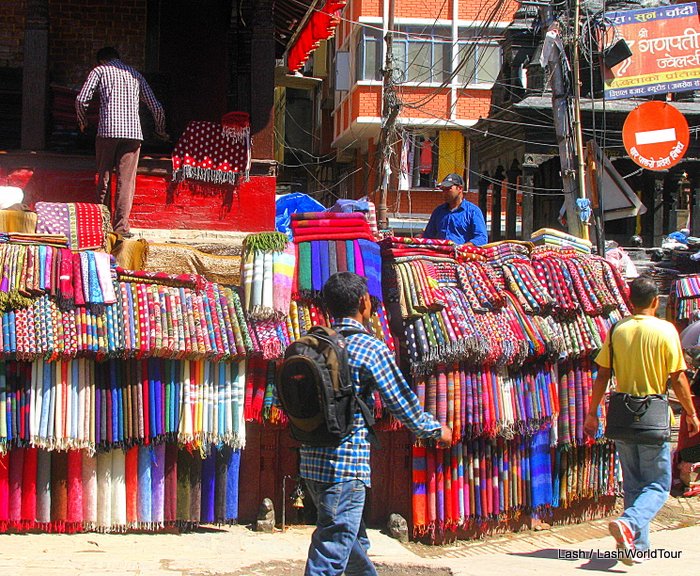
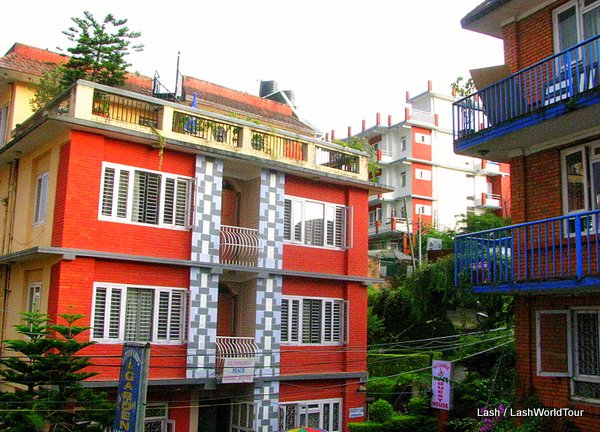
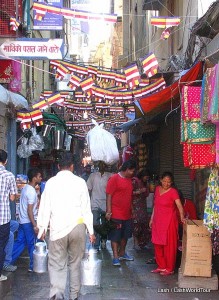
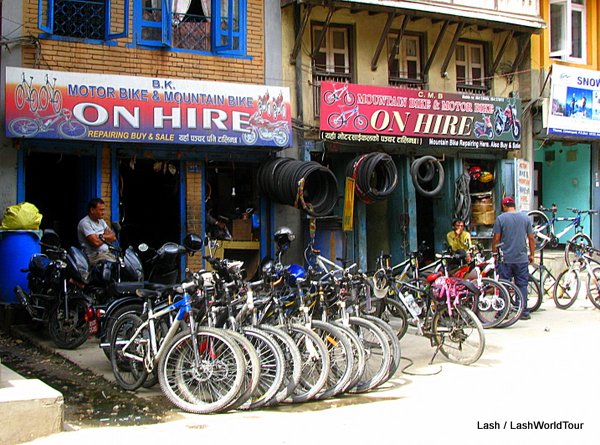
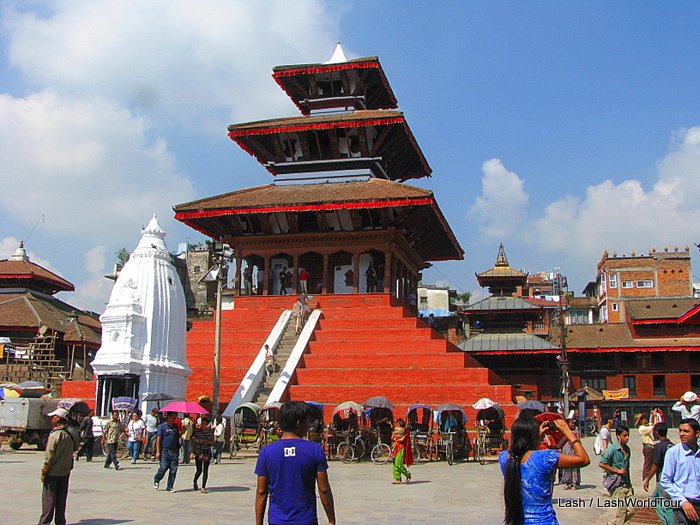
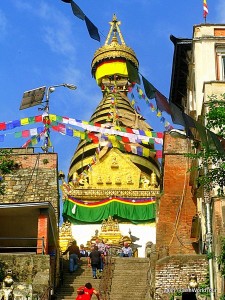





 Hi! I'm Lash, an American nomadic world traveler who's been traveling solo since 1998. I’m passionate about traveling the world nomadically and then sharing it all with you. I hope to inspire you to travel the world, to entertain you with tales from the road, and to help you reach your travel dreams. Welcome!
Hi! I'm Lash, an American nomadic world traveler who's been traveling solo since 1998. I’m passionate about traveling the world nomadically and then sharing it all with you. I hope to inspire you to travel the world, to entertain you with tales from the road, and to help you reach your travel dreams. Welcome! 




57 pings
Skip to comment form ↓
4 Minute Travel Guide: Kathmandu - Oaxaca
2018/01/26 at 1:40 pm (UTC 8) Link to this comment
[…] Guide to Thamel, Kathmandu | 10 Important Tips for Visiting Kathmandu | Ten Interesting things to do in Kathmandu | 5 Offbeat Experiences in Kathmandu | Solo Female […]